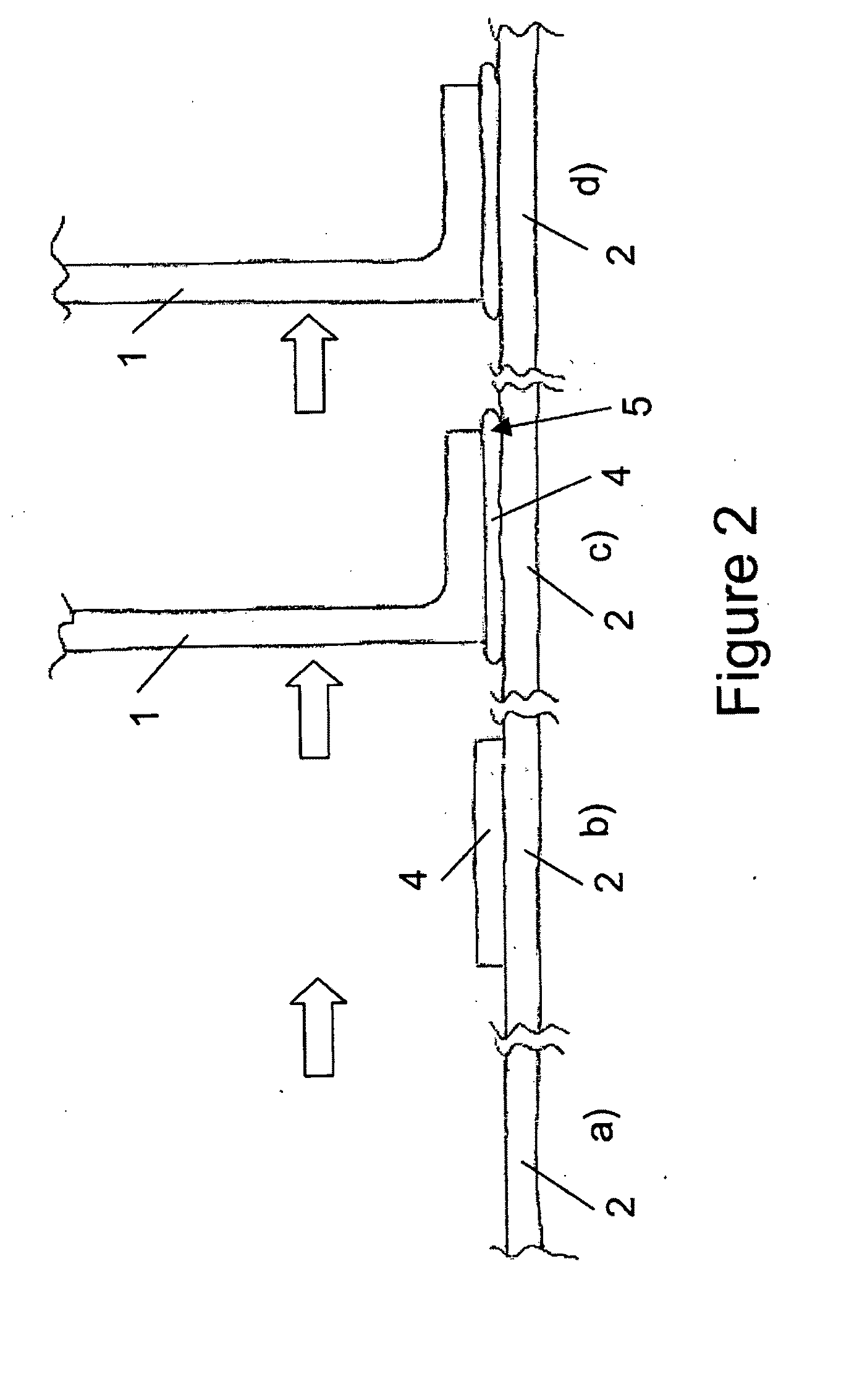Adjustable shim
a shim and adjustment technology, applied in the direction of warp knitting, lamination, weaving, etc., can solve the problems of insufficient tolerance of the manufacturing of the components in question, voids between structural components being common problems, and the situation has been significantly worsened, so as to achieve convenient handling, quick cure, and easy to be laid up
- Summary
- Abstract
- Description
- Claims
- Application Information
AI Technical Summary
Benefits of technology
Problems solved by technology
Method used
Image
Examples
Embodiment Construction
)
[0025]FIG. 1 shows the steps of joining a rib 1 to a lower cover 2 of an aircraft wing box. As shown in FIG. 1a), the rib 1 has a foot 3 for attaching the rib 1 to the cover 2. The rib 1 is aligned with the cover 2 (not shown in FIG. 1a)) to determine the extent of the void between the two components which is to be filled when the components are joined. An adjustable shim 4 having a thickness greater than that of the void is attached to the underside of the rib foot 3, as shown in FIG. 1b). The rib 1 and the cover 2 are brought together once again as shown in FIG. 1c), until the rib 1 and cover 2 are correctly aligned as shown in FIG. 1d). A jig (not shown) may be used to align the components, if necessary.
[0026]As can be seen from FIG. 1d), the shim 4 is compressed when the rib 1 and cover 2 are correctly aligned. Some of the shim material is extruded from the sides 5 under the compressive load. The compressive load is applied to the shim 4 by the weight of the rib 1 alone, or wit...
PUM
| Property | Measurement | Unit |
|---|---|---|
| melting temperature | aaaaa | aaaaa |
| temperatures | aaaaa | aaaaa |
| compressive | aaaaa | aaaaa |
Abstract
Description
Claims
Application Information
 Login to View More
Login to View More - R&D
- Intellectual Property
- Life Sciences
- Materials
- Tech Scout
- Unparalleled Data Quality
- Higher Quality Content
- 60% Fewer Hallucinations
Browse by: Latest US Patents, China's latest patents, Technical Efficacy Thesaurus, Application Domain, Technology Topic, Popular Technical Reports.
© 2025 PatSnap. All rights reserved.Legal|Privacy policy|Modern Slavery Act Transparency Statement|Sitemap|About US| Contact US: help@patsnap.com



